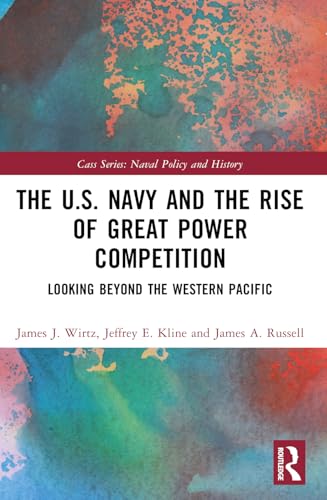
The U.S. Navy and Its Cold War Alliances, 1945–1953
by Corbin Williamson
Popularity
2.33 / 5
* A book's popularity is determined by how it compares to all other books on this website.
Where to buy?
Buy from Amazon* If you buy this book through the link above, we may receive a small commission at no extra cost to you.
The U.S. Navy and Its Cold War Alliances, 1945–1953 by Corbin Williamson
Details
War:
Cold War
Perspective:
Commanders
Military Unit:
US Navy
True Story:
Yes
Biography:
No
Region:
North America
Page Count:
368
Published Date:
2020
ISBN13:
9780700629787
Description
Main Themes and Topics
The U.S. Navy and Its Cold War Alliances, 1945–1953 by Corbin Williamson delves into the intricate dynamics of naval alliances between the U.S., British, Canadian, and Australian navies during the initial phase of the Cold War. The book explores the evolution of these alliances from a period of post-World War II collaboration to a strategic partnership against the looming Soviet naval threat. Williamson meticulously examines the informal yet crucial connections that were forged among these naval forces, including personnel exchanges, equipment standardization, and joint training and planning efforts aimed at countering Soviet ambitions. Central to the book is the exploration of the 'history from the middle' approach, focusing on the midlevel officials and officers who played vital roles in managing these alliances.
Writing Style and Tone
Corbin Williamson's writing style is both scholarly and accessible, offering a well-researched narrative that remains engaging for both academic audiences and general readers interested in naval history or Cold War studies. The author employs a tone that balances detail with readability, ensuring that complex military and political topics are presented clearly. Williamson's use of recently declassified documents provides a fresh perspective, adding depth and authenticity to the historical account.
Brief Summary
The book provides an in-depth analysis of the U.S. Navy's strategic shift from its post-World War II stance of independent power to cooperative alliances with the British, Canadian, and Australian navies in response to Soviet threats during the Cold War. It highlights the various informal connections developed among these forces and examines the influences of domestic politics and security concerns on those relationships. By using a unique perspective on the role of midlevel naval officials, Williamson offers insights into the day-to-day operations and collaborations that were crucial to maintaining these international alliances.









